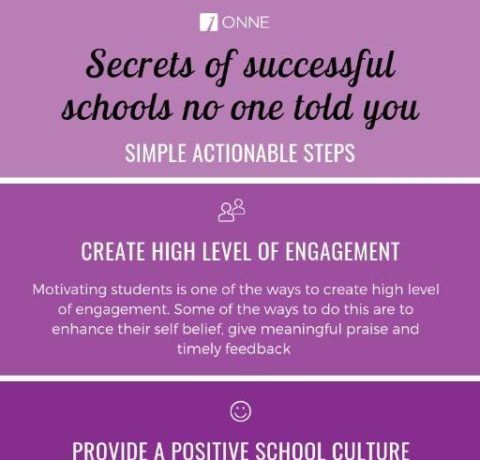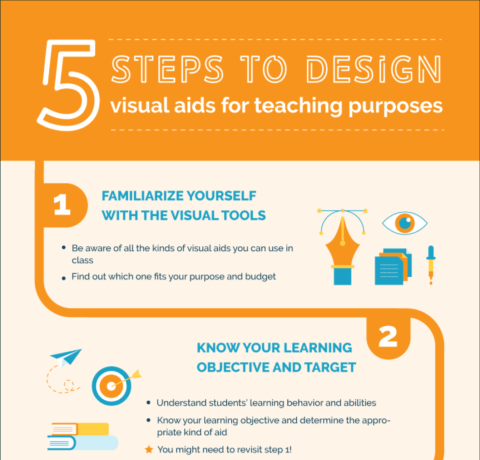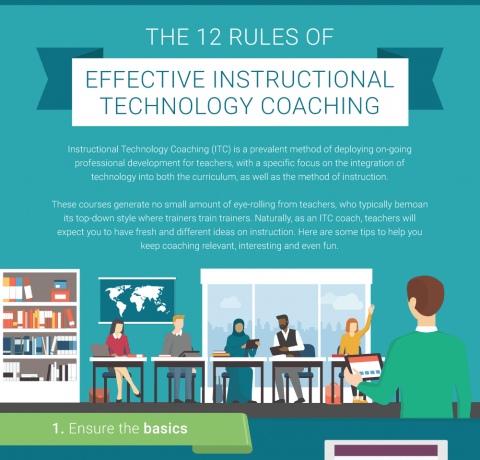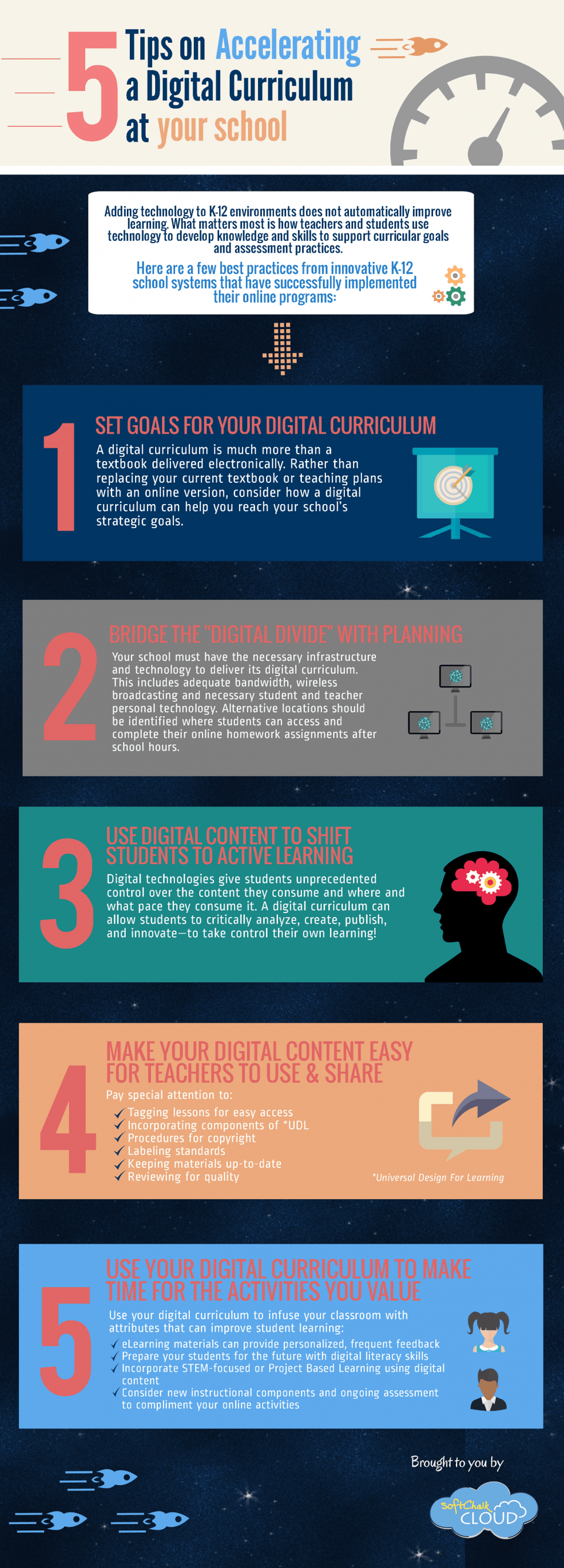Tips on Accelerating a Digital Curriculum in Your School Infographic
Adding technology to K-12 environments does not automatically improve learning. What matters most is how teachers and students use technology to develop knowledge and skills to support curricular goals and assessment practices. A digital curriculum is much more than a textbook delivered electronically. Rather than replacing your current textbook or teaching plans with an online version, consider how a digital curriculum can help you reach your school’s strategic goals. The Tips on Accelerating a Digital Curriculum in Your School Infographic presents a few best practices from innovative K-12 school systems that have successfully implemented their online programs.
1. Set Goals for Your Digital Curriculum.
A digital curriculum is much more than a textbook delivered electronically. Rather than replacing your current textbook or teaching plans with an online version, consider how a digital curriculum can help you reach your school’s strategic goals
2. Bridge the "Digital Divide" with Planning.
Your school must have the necessary infrastructure and technology to deliver its digital curriculum. This includes adequate bandwidth, wireless broadcasting and necessary student and teacher personal technology. Alternative locations should be identified where students can access and complete their online homework assignments after 2 school hours.
3. Use Digital Content to Shift Students to Active Learning.
Digital technologies give students unprecedented control over the content they consume and where and what pace they consume it. A digital curriculum can allow students to critically analyze, create, publish, and innovate—to take control their own learning!
4. Make Your Digital Content Easy for Teachers to Use & Share.
Pay special attention to:
- Tagging lessons for easy access.
- Incorporating components of UDL.
- Procedures for copyright.
- Labeling standards.
- Keeping materials up-to-date.
- Reviewing for quality.
5. Use Your Digital Curriculum to Make Time for the Activities You Value.
Use your digital curriculum to infuse your classroom with attributes that can improve student learning:
- eLearning materials can provide personalized, frequent feedback.
- Prepare your students for the future with digital literacy skills.
- Incorporate STEM-focused or Project Based Learning using digital content.
- Consider new instructional components and ongoing assessment to compliment your online activities.
Read also: How educators can make the transition from a print-based curriculum to a digital







You can adjust your cookie preferences here.